Are you a bilingual, dual, or immersion teacher wondering how to implement guided reading in Spanish? Well, the good news is that if you’ve taught guided reading in English, you more or less know how to do it in Spanish. Keep reading to find out how to tweak your guided reading instruction to make it Spanish-friendly, AND download a free “Guided Reading en Español” pack of materials!
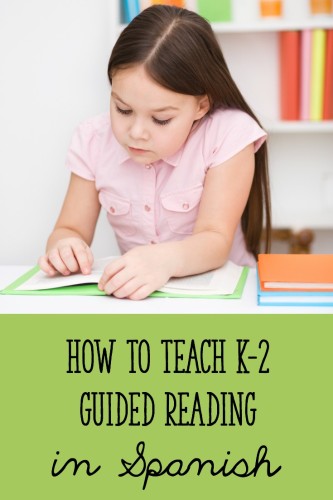
What is Guided Reading?
Whether you teach in English or Spanish, guided reading is a time for students to practice reading at their instructional levels. The texts students read during guided reading will be slightly harder than texts that they can read independently. During guided reading, you provide support so that students can decode and comprehend those texts that are a little bit hard.
Guided reading is not “round robin reading.” Round robin reading is having students each take a turn reading aloud from a text. Guided reading, on the other hand, provides all students in a small group (3-6 kids) with simultaneous reading practice. Students are all whisper reading or silently reading the same text at the same time (but at their own pace). This provides much more practice and “eyes on text” time than does round robin reading.
In addition to reading part of or all of a text, guided reading may include brief components of decoding instruction, comprehension instruction, word study, sight word practice, phonemic awareness, and/or vocabulary study.
What Does a Guided Reading Lesson Look Like?
A typical guided reading lesson lasts 10-20 minutes, averaging about 15 minutes. A Kindergarten guided reading lesson at the beginning of the school year will be closer to 10, while a second grade guided reading lesson will be closer to 20.
When students come to your small group table for guided reading, you may want to begin the lesson with a few “fluency items.” You can use flashcards or another means of quickly reviewing letter sounds, syllables, or high frequency words. If you choose to do this, use a digital clock or timer to carefully keep track of your time. You want this review to last only 1-3 minutes.
After finishing with your fluency items, you may choose to have students do a reread of familiar texts that you have already read in previous guided reading lessons. Rereading familiar texts helps improve students’ reading fluency. Kindergarteners who are reading short, patterned books may go through multiple familiar texts during this time. First or second graders may get through just one text or part of a text. You can introduce the familiar reading activity by giving a quick tip on fluency (i.e., “Try to make your voice sound like you are talking as you reread today” or “Look for question marks and make your voice go up at the end”). If you teach first or second grade and would like to go more in-depth with a comprehension conversation about a text, have them all reread the same familiar text during this time. Then, spend a few minutes on in-depth comprehension (students will be more ready for this since they will have read the text at least twice). Provide students with about 4-5 minutes for their familiar reading practice.
Next, you will introduce the main text for the day. Your book introduction should be brief and give students what they need to successfully decode the text. You may have students look at 1-2 of the pictures in the book and talk about what they notice. You might ask students to share what they already know about the topic of the book. Or, if there’s a word that you know students will struggle with because it is beyond their current level, you may want to show them the word. If you encourage students to talk about the text a little bit before they begin reading, you are helping set them up for success.
Before students begin reading or perhaps after they read a page or two, you will likely want to highlight a decoding strategy that you’d like them to use. This decoding strategy may be something relevant to this particular book, or it may be something that the group has been practicing recently. As with your book introduction, keep your decoding strategy instruction very brief.
Next, students will whisper read or silently read the day’s text. You will want to listen in on a few students’ reading and take a running record of one student’s reading. If students finish their books early, you can have them reread or go back and search for a certain spelling pattern or new vocabulary words.
After students have finished reading, I like to talk about the content of the text right away. This sends the message to students that the most important part of reading is comprehension. After a brief comprehension conversation, we may also touch back on the decoding strategy I mentioned. If I noticed that a student used the strategy, I will recognize that student in front of the group and share what he/she did.
If there is leftover time after our comprehension/decoding conversation, we may take a quick look at a spelling pattern found in the book, discuss a vocabulary word, or do a quick phonemic awareness activity.
Whew. This sounds like a whole lotta stuff for a 15-20 minute lesson! Realistically, you will not be able to include all of the “extra” components (fluency items, familiar reads, word study, etc.) into every guided reading lesson that you teach. You can mix and match the “extras” (i.e. include syllable practice on Tuesdays and phonemic awareness practice on Thursdays).
There are lots of variations on the model I’ve described here. However, I do recommend always making sure that you do two things during every guided reading lesson you teach: 1. Have students read instructional level text and 2. Discuss the content with them (for comprehension). I also try (as much as possible) to minimize my “talk time” during each lesson, in order to maximize students’ talk time and reading time.
How Is Guided Reading Different When Taught in Spanish?
Guided reading largely follows the same format, regardless of if you are teaching in English or Spanish. However, having taught guided reading in both languages, here are some things to consider when teaching it in Spanish:
- When reviewing fluency items with students, focus on syllables (when developmentally appropriate). Spanish is a syllabic language. While your English-speaking teaching partners may be focusing on word families and vowel spelling patterns, you will need to help students learn to read and blend different types of syllables.
- Decoding strategies differ slightly between English and Spanish, particularly for beginning readers. Certain strategies are the same (i.e. “Look at the picture” or “Look at the first letter”). However, as I mentioned above, students should be encouraged to decode and blend syllables when reading in Spanish. “Look at the first syllable” or “Blend two sounds to make the syllable” are strategies that Spanish readers need, even though you will likely not see them on a list of English decoding strategies. My “Guided Reading en Español” pack has reading strategy menus and posters that are designed specifically for students who are learning to read in Spanish.
- Different phonemic awareness activities are appropriate for students who are learning to read in Spanish. Students should practice separating / clapping the syllables in words, blending syllables to make words, blending individual sounds to make syllables, segmenting syllables into their individual sounds, etc.
- You may have to spend more time on comprehension than decoding as students become more fluent readers. Since Spanish is a phonetic language, once students have “cracked the code,” they will likely be able to decode texts that are much more difficult than they can comprehend. In late first grade and second grade, you may have students who can decode perfectly but do not comprehend what they read. Keep this in mind as you are planning your teaching points and the amount of time you will spend on decoding strategies and comprehension.
Free Materials for Teaching Guided Reading in Spanish
All of this is a lot to think about when planning for a lesson that lasts only about 15 minutes! Even though I’ve been teaching guided reading for years, I am always trying to find ways to improve my lessons.
To help make your lessons easier to plan for and teach, download my FREE “Guided Reading en Español” pack! It includes 3 different types of lesson planning templates, decoding strategy menus and cards, comprehension prompts, sentence starters, phonics posters, alphabet flashcards, syllable flashcards, and more. Click on the image below to get it:
Do you have any guided reading tips of your own to share? Comment below!

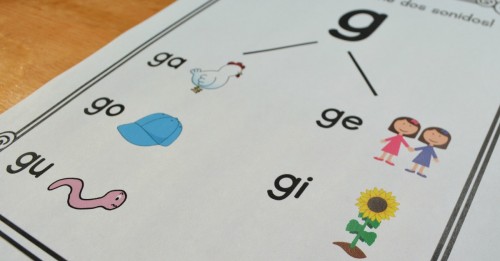

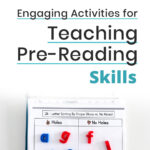
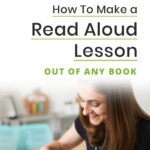
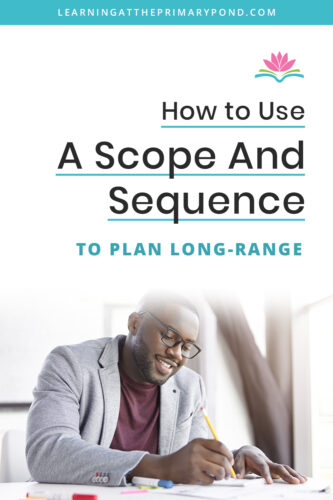
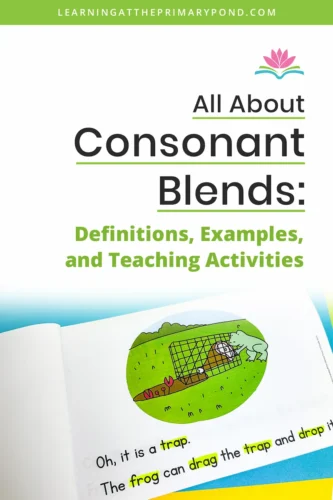
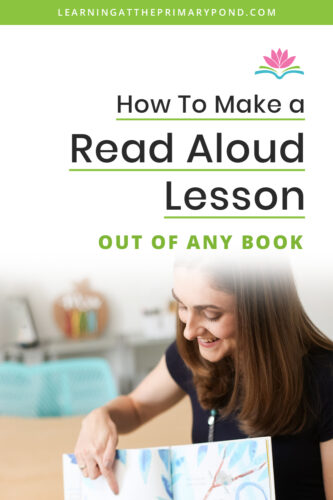






Fantástico artículo y recomendaciones, muy útiles, son profesora de español como segunda lengua y voy a empezar a dictar clases a niños desde PK hasta 7 grado y no tengo experiencia con niños, mil gracias….
Gracias! Y suerte con este trabajo…especialmente con los niños de PK!!
Muchísimas gracias. Ya recibí el paquete y me encanta.
I would like to receive the package you mentioned. It’s going to help me a lot with my new first grade bilingual class.
Hi Carmen! Go ahead and put your info into the boxes, and it will be sent to you automatically. 🙂
Alison
Alison! Estoy tan agradecida y feliz de haber encontrado tu blog y materiales. Mil gracias por compartir tu experiencia y talento con tantas personas que necesitamos una guía para ayudar a nuestros pequeños. Te deseo el mayor éxito!
Aw, mil gracias por tus palabras, Paola! 🙂
Alison
You are amazing! Me encanta el paquete! What an amazing resource. Thank you for sharing.
So glad you like it!! Thanks for your sweet comment! 🙂
Alison
Hola! gracias por el paquete que has compartido! Tengo una pregunta, si mi hijo apenas esta comenzando a leer en Ingles, crees que los diferentes sonidos de las vocales en ingles y en español lo confundirían? o como manejas eso? gracias!
Hi Paulina! Creo que si su hijo ya entiende bien las vocales en español, puede tener más éxito con las vocales en ingles. Yo prefiero comenzar con las vocales en español porque son muuuucho mas fácil. Pero los académicos están diciendo que está bien aprender a leer en los dos idiomas al mismo tiempo. En mi opinión, lo mas importante es que expliquemos bien las diferencias entre los dos idiomas (incluso las vocales) cuando enseñamos los dos.
Alison
Hi Allison, We are planning to have an emergent Spanish school starting with kindergarten. I am the kindergarten Teacher! Is it possible to receive the Guided Reading in Spanish kit? Thank you so much.
Absolutely! Just fill in your information within the post and it should be sent to you automatically. Let me know if it doesn’t come thru!
Alison
Muchas gracias, siempre es de gran ayuda el punto de vista de personas expertas en la materia.
Y bienvenido cualquier material.
Muchas gracias, siempre es de gran ayuda el punto de vista de personas expertas en la materia.
Y bienvenido cualquier material.
Alison,
Mil gracias por esta información tan informativa y clara.
De nada, Kerri! 🙂
Alison
Hola Alison y Muchas Gracias! Encuentro todo e so mum interesante. I am a ML teacher and I tried to teach Spanish phonics to 5-6 years old this year after they learned the English one. Children learned both but they obviously need a lot of practice to be confident in the foreign language.
Would love to receive the guided reading kit in Spanish if possible.
Your work looks amazing. Thanks so much for sharing
Hi Simona! Definitely agreed about them needing lots of practice! Were you able to click the image and sign up for the materials? They should be sent to you automatically. Feel free to email me if they don’t come through! 🙂
Alison
Can you send me the ,”my guided reading en español ,”thanks
Hi Luz! If you use the boxes in the post, they should be sent to you automatically – but email me at Alison @ learningattheprimarypond.com if they don’t come through.
Alison
Hi Alison can you please send me the guided reading in Spanish?I am a para educator and help with a bilingual program at my school. I will appreciated it a lot. Thank you for the great ideas.
Hi Maria! Go ahead and fill in your information in the boxes within the post. If you don’t automatically receive the materials, please email me at Alison @learningattheprimarypond.com, and I’ll send them over. 🙂
Alison
I’m thrilled that I have found your blog. This is my first year teaching, and I am in a bilingual second grade classroom. Spanish is my third language, and although I speak it fluently, teaching in Spanish can sometimes pose some challenges, mostly because I never did it before. It’s also extremely difficult to find materials in Spanish, especially freebies. Your blog is incredible, and the materials you offer are engaging and to the point. Thank you so much for sharing it!
Rebeca, I’m so glad this helps!! I’m totally impressed with your trilingualism. 🙂 Thanks so much for taking the time to write me this sweet comment! Feel free to reach out anytime if I can help with anything!
Alison
Thank you so much! This is such a helpful article… am making a wish list of things I need for trimester 2 centers. This is a big help.
Thank you! I really needed some Spanish materials to support my program.
You’re welcome! So glad this helps!
Alison
LOVED THIS!!!! Can’t wait to try some of your resources!!!
Thanks, Jazmin!! 🙂
Alison
Gracias por la información, solo que no pude abrir el enlace de <>, ¿Me ayudarás?
Hola! Es el enlace para el freebie que no funciona?
Alison
I would love to get the freebie
Hi Maritza! Were you able to use the links in the post to receive the freebie via email? Let me know if not!
Alison
Hello!
This upcoming school year I will be teaching a first grade dual language class for the first time. This freebie is absolutely amazing!!! Guided reading can seem like such a daunting task for a new teacher but your resource has everything someone needs to build upon it (if necessary). Thank you so much for providing this for fellow teachers! It’s amazing!
Hi Kathy, you’re welcome! Good luck in dual!! 🙂
Alison
Thank you so much for the resources. My daughter just finished kindergarten in a dual immersion program. I am very excited to use these resources to continue to further improve her reading and comprehension skills. I’m so impressed by your package. It contains all we need and will truly support success. Thank you so much!
Hey Michelle! you’re so welcome! I’m glad this can help your daughter. Thanks for reading!
Alison
This sounds great for my class. I am looking forward to using it with my dual language class. Thank you for sharing!
I am so glad I came across this blog. Super excited about getting this guided reading freebie. This is my first year with guided reading and all the training I have received was in English. Thank you so much for sharing.
I’m so glad this is helpful!! Thanks for reading!
Alison
hi i would like to know about Spanish guided reading lesson plans through the year. can you help me with?
Hi Luz! Make sure to sign up to get the freebie in the post! I don’t have Spanish guided reading lessons throughout the year, but maybe the freebie can help get you started. 🙂
Alison
Me encanto este material! Muy completo y preciso. Muchas gracias.
very interesting – I’d love to follow this blog
Thank you so much for sharing!
Wow great resource! Gracias Allison!
You’re so welcome! Thank you!
Thank you so much! This is super helpful! I feel better equipped now!
Very good points! It takes time to plan a good guided reading lesson. Thank you, it took me a lot of years of research, advice/observation from my expert colleagues, and really put it to work in my classroom with my students. Now I’m retired but I’m helping out teachers. I couldn’t download the Spanish guided reading kit, can you e-mail to me, thank you!
Do you have a syllabus to use with your Spanish material (in your shop) ? I would love to buy materials but would not know where to start and how to progress.
Hey there! The Spanish Writing Workshop curriculum includes a pacing guide and outline for each unit. It also includes structured daily lesson plans for the minilessons and in-depth directions and writing samples for the student writing. Feel free to email me if you’d like to see a sample lesson plan or the pacing guide!
Amazing post and resource. Thank you so much
You’re welcome!